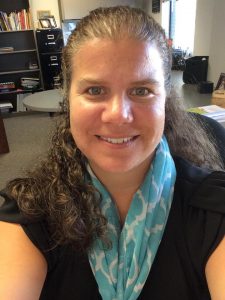Science and Literacy: mentor texts
Elementary teachers are likely familiar with the use of mentor texts with their students to help strength and deepen understanding within a variety of ELA standards. But, have you considered how those same mentor texts can be used to bridge literacy and science? Imagine how seamless your transition from “literacy time” to “science time” could be when we simply extend the learning from one domain into the other with the connection to the mentor text. Students could move naturally from using the Mentor texts to identify author’s craft to using that same text to create notice/wonder charts or driving question boards for their science investigations.
Author Stacey Shubitz in her book, Craft Moves: Lesson Sets for Teaching Writing with Mentor Texts, shares 10 power craft moves for both fiction and non-fiction tests. By utilizing the power craft moves, a teacher will be building towards the craft and structure strand of the ELA Iowa Core standards.
Those power craft moves can be found in the table below:
| Fiction | Nonfiction |
|---|---|
| Dialogue | Back Matter |
| Internal Thinking | Content-specific Vocabulary |
| Lead/Ending | Lead/Ending |
| Punctuation to Create Voice | Precise Words |
| Repetition | Punctuation to Create Voice |
| Show, Don’t tell | Quotes and Sources |
| Specific Details | Repetition |
| Structure | Teaching Tone |
| Turning Point | Text Features |
| Varied Sentence Lengths | Topics and Subtopics |
Katie Wood Ray, in her 2002 book Wonderous Words: Writers and Writing in the Elementary Classroom explained the importance of mentor text in the following way: “As we develop teaching relationships with authors and their work, we find that certain texts seem to surface as very important to teaching. These are the texts that are just full of curriculum potential.”
While mentor texts can take many forms but they share several key characteristics. A quality mentor text should:
- be rich and engaging enough to support rereading them multiple times;
- offer examples of the aspect of author’s craft being studied;
- ignite writers’ imaginations and invite opportunity to try mirroring the same;
- be representative of the content students are studying (i.e. demonstrate models of well-crafted writing across content areas)
It is easiest to start with the science (see Start with Science blog) and determine the science content you will be covering, and then proceed to select your mentor text around that content. Below you will find a short list of possible books you might want to consider using as mentor texts. You can find many more possibilities by browsing MackinVia (see your school secretary for your school’s login), the Central Rivers media resources, (including the book I Can Write LIke That), NSTA Outstanding Science Trade Books list, and even your classroom, school, and local library. You can also find additional list of possible titles by visiting the Central Rivers literacy workshop google site.
| Title | Science Standard(s) | Author’s Craft |
|---|---|---|
| The Most Magnificent Thing
Author: Ashley Spires |
K-2-ETS1-1 | Dialogue, Internal thinking, Lead/Ending, Punctuation to Create Voice, Repetition, Structure, Turning Point, Varied Sentence Lengths |
| Come on Rain
Author: Karen Hesse |
3-ESS2-1 | Dialogue, Internal thinking, Lead/Ending, Punctuation to Create Voice, Repetition, Structure, Turning Point, Varied Sentence Lengths |
| A Rock Is Lively,
author: Dianna Hutts Aston |
2-ESS1-1
4-ESS1-1 |
Content-Specific Vocabulary, Lead/Ending, Precise words, Punctuation to Create Voice, Text Features, Topics and Sub-topics Central Rivers Literacy Consultant Kelsey Bowers created an analysis that provides more detail on how this book utilizes the listed power crafts. |
| Come to the Ocean’s Edge: A Nature Cycle Book,
Author: Laurence Pringle |
K-ESS2-1 | Back matter, Content specific Vocabulary, Lead/Ending, Precise words, Punctuation to Create Voice, Text Features |
| If you Hold A Seed
Author: Elly MacKay |
3-LS1-1 | Lead/Ending, Punctuation to Create Voice, Repetition, Structure, Turning Point, Varied Sentence Lengths, Show/Don’t tell |
| Nefertiti the Spidernaut
Author: Darcy Pattison |
3-LS3-1
3-LS3-2 |
Back matter, Content specific Vocabulary, Lead/Ending, Precise words, Punctuation to Create Voice, Text Features |
Consider an upcoming science unit and determine the content of that unit. Then, using one of the resources above, select a mentor text around that science content to help integrate your science and literacy. Remember that your science consultants and literacy consultants are here and happy to assist you in your planning!
 Reach out to the author- Central Rivers AEA Science Consultant- Mandie Sanderman
Reach out to the author- Central Rivers AEA Science Consultant- Mandie Sanderman
